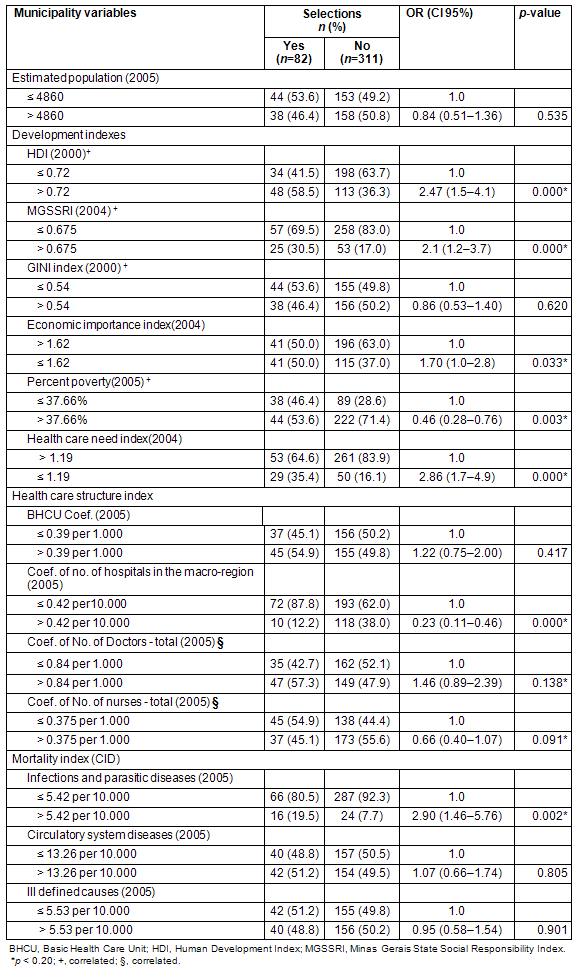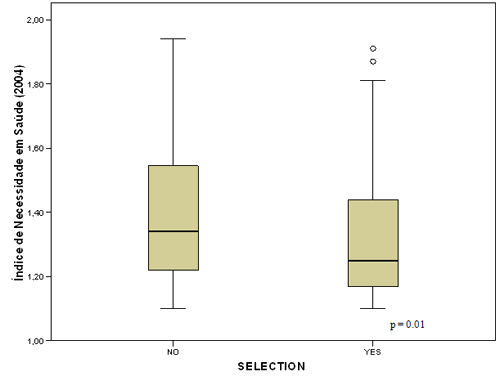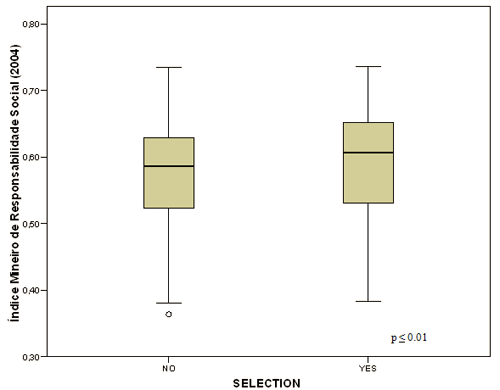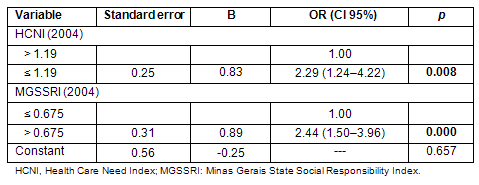Introduction
Cardiovascular diseases are the main causes of morbidity and mortality worldwide, at a high social cost. Early diagnosis is important for both individuals and health systems. In Brazil, basic diagnosis and follow up, including assessment for classical risk factors of cardiovascular disease and particularly basic care, is recognized as important in all levels of the Brazilian healthcare system (Sistema Único de Saúde, SUS)1,2.
While the use of telecommunications systems can be a viable and valuable strategy for overcoming geopolitical barriers in remote medical care3,4, such health technology is rarely available in Brazil. In this context, the Minas Telecardio project was established in Brazil's Minas Gerais State in June 2006, with an aim to support the basic healthcare network in early diagnosis and management of those with cardiovascular disease. The project was implemented in 82 small municipalities in partnership with the State Health Secretary and five state universities5.
The establishment of this partnership was based on the following municipal guidelines: (i) the need of early intervention into cardiovascular diseases; (ii) the age and social characteristics of their populations; (iii) the lack of proper infrastructure and trained human resources for the management of cardiovascular diseases; and (iv) recognition of the responsibility assigned to the municipalities as a result of the national process of consolidation of the SUS.
The municipalities received a digital electrocardiograph and a computer ready for internet connection. The main activities of the project included assistance to patients by remote consultations in cardiology and other specialties; continuing education of the municipalities' health teams; assistance in medical reporting and electrocardiogram (ECG) reading; and clinical discussion. The participating municipalities received a digital electrocardiograph machine and computer ready for internet connection. Further details on the implementation methodology were recently published5.
The implementation method of the remote cardiology system was a quasi-experimental study. The use of a non-randomized design in the assessment of healthcare programs is useful when there are areas or groups for external comparison6-10. The investigator intervenes on the characteristic under investigation; however, the participants or areas are not randomly assigned to the experimental and control groups. The groups or areas are generally formed according to administrative, operational, or other criteria8.
Given the non-random assignment of interventions in the implementation of the Minas Telecardio Project, the purpose of this article was to look at factors beyond 'health' associated with the selection of municipalities to implement a telecardiology remote medical care system.
Method
The remote cardiology medical care system was implemented in Minas Gerais State municipalities according to the following two initial inclusion criteria: greater than 70% coverage by the family health care program11; and a population of 10 500 or fewer6. Other eligibility criteria that confirmed the official expression of interest by the municipality (demonstrated by attending the briefing meetings) were: information about the actual condition of the municipal healthcare system; demonstrated need for a remote cardiology service; and availability or potential for adaptation of the existing local internet network. If municipalities were chosen to receive the telecardiology system but showed little interest or had operational difficulties in adapting their internet network, they were replaced by others who met the eligibility criteria and were on a waiting list.
This study used an ecologic design. Based on CDC's theoretical framework Health Impact Assessment (HIA)10, the municipalities were divided into two groups for comparison:
- Group I: Intervention municipalities, the municipalities where the remote cardiology program was implemented (n = 82)
- Group II: Comparison municipalities, all other program-eligible municipalities (n = 311).
Demographic, social and development, healthcare structure, and mortality indexes of all municipalities were collected from the respective secondary information sources Cadastro Nacional de Estabelecimentos de Saúde (CNES)12, Sistema de Informações de Mortalidade (SIM)13, Fundação João Pinheiro (FJP)14, and Instituto Brasileiro de Geografia e Estatística (IBGE)15, as detailed below. In general, the indexes were the most recent available and the closest to the remote cardiology system implementation, which took place in June 2006.
Demographic, social and development, health care structure, and mortality indexes
Demographic indexes: These included a population estimate for Minas Gerais municipalities in 200515.
Social and Development Indexes: Human Development Index (HDI, 2000) The HDI is based on three features: (i) life expectancy; (ii) literacy and educational attainment; and (iii) GDP per capita. It expresses the human development level of the country or region, ranging from 0 (low) to 1 (high).
Minas Gerais State Index of Social Responsibility (MGSSRI; Índice Mineiro de Responsabilidade Social, 2004) The MGSSRI is also a synthesis index based on 9 dimensions: (i) educational attainment; (ii) health care; (iii) public security; (iv) employment and income; (v) political administration; (vi) housing; (vii) environment; (viii) culture; and (ix) leisure, and sports. It also ranges from 0 to 1, with closeness to 1 indicating higher municipal social responsibility in terms of social and financial administrative responsibility.
GINI index (2000) This index expresses the degree of inequity of income distribution as a function of household income per capita. It ranges from 0 to 1. The higher it is, the more unequal is income distribution.
Economic Importance (2004) This index is used to measure the economic importance of each Minas Gerais State municipality in relation to the whole state. It is provided by the Service and Goods Tax (Imposto sobre Circulação de Mercadorias e Serviços, ICMS) revenue of the municipalities. It scores from 1 to 2, according to the economic importance of the municipality.
Percent Poverty (2005) This provides the percent municipal resident population with a monthly household income per capita of half a living salary in a given year.
Health Care Need Index (HCNI, 2004) The HCNI is composed of variables such as the mortality rate of children under 5 years, fertility rate, mortality ratio of ill-defined causes, and literacy rate. It scores from 1 to 2 with increasing need of health care. Combined with the economic importance index it provides the allocation factor for health care financial resources16.
Health Care Structure Index (December 2005): This index gives the number of health facilities and professionals in relation to the resident population of a given geographic unit. It consists of the coefficient of basic health care units, hospitals per 'macro-region', and the number of doctors and nurses in each municipality.
Mortality Index (2005): This index is composed of the mortality rates from infectious and parasitic diseases, and circulatory system and ill-defined cause diseases. It was adjusted for sex and age for the year 2005.
Statistical analysis
Multiple regression analyses were performed using the generalized estimation equation model (GEE), to take in consideration the existence of a correlation between municipalities of the same macro-region17,18. The outcome variable was the existence of the remote cardiology program in the municipalities. The explanatory variables were selected according to their capacity to identify inequities in health care in the Brazilian municipalities19-23 and predict the existence of healthcare programs24.
All the regression model co-variables were categorized by the evaluation of their functional relationship with the cut-off point found in the CART decision tree25.
The GEE model was constructed by initially selecting the variables with p ≤ 0.2026 in the multivariate analysis and that were not correlated to each other. A model was fitted with all the variables initially selected by univariate analysis. The criterion of permanence of the variables in the final model was p ≤ 0.05 and the absence of collinearity. The SPSS v15 (SPSS Inc; Chicago, IL, USA; www.spss.com.au) statistical software was used.
The Minas Telecardio Project was approved by the research ethics committee of Universidade Federal de Minas Gerais (UFMG), decision 0507/06.
Results
The intervention (n = 82) and control (n = 311) municipality groups were submitted to univariate comparison considering the population estimate, development, healthcare structure, and mortality indexes (Table 1).
Table 1: Frequency of distribution and results of the univariate analysis of the municipalities in the remote cardiology program, Minas Telecardio (n = 393)

Most development indexes, including the HDI, the MGSSRI, the GINI Index, the Economic Importance Index, the Percent Poverty Index, and the HCNI, revealed a significant difference between the groups (p < 0.04), as well as all health structure indexes, except the basic health care unit index (BHCU). The following coefficients were significantly different between groups: number of hospitals per macro-region and human resources, including the number of doctors and nurses (p < 0.15). Concerning the mortality indexes, only mortality by infections and parasitic diseases was significant in the univariate comparison of the program inclusion (p < 0.01). The intervention group presented higher mortality from infections and parasitic diseases in relation to the comparison group.
Due to the high correlation between the HDI, GINI, and Percent Poverty and the MGSSRI, only the latter was included in the multivariate model, because it is a compound index. The same behavior was observed between the numbers of nurses and doctors, and only the latter was considered in the multivariate model.
The results of the final model of the estimation equation are given (Table 2). Only the HCNI and the MGSSRI correlated with the implementation of the program (p < 0.01) in the fitted model. The municipalities with the lowest HCNI had a two-fold larger change of participation in the program (OR: 2.29, confidence interval [CI]: 1.24-4.22). Likewise, those with higher MGSSRI had a 2.5 greater chance to be included in the program (OR: 2.44, CI: 1.50-3.96).
The HCNI and the MGSSRI are shown as a function of participation of the municipalities in the program or not (Figs1,2). It can be observed that the HCNI of the municipalities in the intervention group was smaller, while the comparison group presented a larger variability for this variable. The intervention group presented a higher MSSSRI, but also a higher variability in relation to the comparison group.

Figure 1: Comparison of the intervention and control groups as a function of the health care need index (HCNI).

Figure 2: Comparison of the intervention and control groups as a function of the Minas Gerais State social responsibility index (MGSSRI).
Table 2: Result of the estimation equation for the participation of the municipalities in the remote cardiology program, Minas Telecardio (n = 393)

Discussion
This study showed that the remote cardiology system was implemented in municipalities with less healthcare need (HCNI) and with the best social responsibility indexes (MGSSRI), suggesting that the healthcare need and governability indexes may have influenced the implementation of the remote health project.
Since the implementation of SUS in the 1990s, the health sector in Brazil has been characterized by progressive decentralization. In this new context, the municipalities have assumed main responsibility for the management of the healthcare network in Brazil and, thus, for direct service provision in most health actions and programs, even though this may be in a slow, gradual, and negotiated way. The increasing responsibility of the municipalities in offering and managing healthcare services began in the new decade27. Its impacts have been mainly on the organization of municipal healthcare departments, the structure and composition of the healthcare network, in the extension and quality of services provided, and the conditions of access to the healthcare services (ie the municipality has main responsibility for the definition of priorities).
However, an important factor to consider has been the diverse situations among states and that of the country, including regional and intraregional social inequities and differing governance practices. Thus, the local context must be taken into account when analyzing changes in healthcare services, including the implementation of new technologies27,28. In Brazil, studies that assess the changes resulting from the national health sector restructuration are scarce. In contrast, assessment of healthcare programs reveals the use of technological evaluation, quality evaluation, and the application of social science, politics, and planning within the political, economic, and social context in a broader way29.
Healthcare services have grown rapidly with the offer of new technologies, the development of assistance models, and increased emphasis placed on governance, and political and economic systems in Brazil and worldwide. However, differing economic and social conditions, policies, health care indexes, and even organizational cultures have a marked impact on the implementation of healthcare programs.
Evaluation of healthcare programs, services and technologies in general is expanding, undergoing conceptual and methodological diversification, and is increasingly required as a supporting tool in decision-making about and the implementation of public health policies29. Health technologies must be evaluated not only from the individual's viewpoint (the biological dimension), but also with consideration of the political and economic macro-context concerning the insertion of the technology30,31. Interventions indirectly related to healthcare needs can have a major impact on health and disease processes23.
Considering all these factors, the present investigation sought to include variables related to the context of the individuals in the analysis in an attempt to understand the role of the physical and social dimensions and of governability in the health of individuals. The role of physical and social contexts are increasingly important in health assessment. They are considered behavior modelers, especially concerning inevitable inequities in the physical and social environments influenced by governance and government. This understanding has led to viewing assessment of the impact of healthcare programs as a means of reducing inequities30-32.
Fundamental to this has been the development of indexes capable of accurately and dynamically assessing the impacts of public programs and of the local governability on the levels of development of the populations' health and welfare. The MGSSRI reflects the level of development of each municipality in the state of Minas Gerais, broadly based as it is on educational achievements, health, public security, employment and income levels, demographics, administration, housing, infrastructure and environment, culture, as well as leisure and sports. It has shown to be a strategic index of governability and municipality potential14,33,34. As a result of the decentralization of healthcare actions, different levels of government (federal, state, and municipal) are co-responsible for social and healthcare advancements. The MGSSRI expresses the success of this joint social responsibility among the three levels of government. Only a further analysis of the data can clearly identify the degree of response of each government level; that is, whether the federal or the state levels have properly attended the municipality, or whether the municipal administration has been proactive in responding to programs established at higher levels34.
In the present investigation, the role of municipal administration appears to have been fundamental to obtaining and implementing the remote cardiology program. Although the municipalities in the intervention group showed a lower healthcare need, they were granted the program. This suggests a greater political and social engagement, as the criteria for participation in the program was attending the briefing meetings and showing a willingness to make the existing structure adequate, which in some cases meant providing human resources for the implementation of the system.
However, it is important to note that some municipalities were included in the program because of their proximity to previously selected municipalities, which made the municipal administrators realize the importance of the project and motivated them to make an effort for inclusion. In this way, municipalities geographically close had a greater chance of implementing the system, not necessarily because they needed it but because of greater articulation and social and political engagement. This was considered in the GEE model statistical analysis17,18.
The study has some limitations. It involved the collation of ecological information and the analysis unit was the municipality. In this type of investigation the omission of some important contextual variables, the so-called latent variables, is a frequent problem. In this case, the existence of such a variable is unlikely because the model included variables that identified inequities in health care in the Brazilian municipalities20-23 and predicted the existence of healthcare programs24.
Although the indexes used have been constructed independently, they provided important information for use in the assessment of the success and sustainability of the Minas Telecardio Project. It is desirable that indexes developed in a non-traditional way for application in health care be a tool not only for analysts and policy-makers, but also for use in epidemiological investigations with regards to the social determinants of health care.
The mortality rates used in this investigation are part of a database managed by the Brazilian Ministry of Health. Vital data flows from the health care unit to city health departments, to the state health secretariat and the Ministry of Health as the final or destination database. The advance of the coverage and quality of the national health database in Brazil is one of the significant achievements in building the National Health System, SUS, which is widely used for health assessments35.
The results of the implementation of this pilot telecardiology project were very promising. After 36 months of operation approximately 63 000 ECGs had been performed, allowing the population in remote areas access to skilled health care. A study evaluating of the effectiveness of this intervention showed a 70% reduction in the referral of patients for cardiac evaluation to specialized urban, metropolitan medical centers5.
Given the promising results of this project, the Government of Minas Gerais State decided to expand it to a total of 604 municipalities, including other medical specialties and making it a permanent program of attention to health5.
Conclusion
The results of this investigation suggest that social organization is an important agent in the improvement of health care, including the implementation of new technologies, in this case leading to social transformation that facilitated a better quality of life and welfare for the local, remote and surrounding communities.
Acknowledgements
The authors are especially grateful to the State Secretary of Health Care of Minas Gerais, the university poles (UFJF, UFTM, UFU, UFMG, and UNIMONTES) and the municipalities that participated in this investigation. Authors ALPR and WTC receive productivity research grants from National Counsel of Technological and Scientific Development, and author CSC holds a scholarship for technological development from National Counsel of Technological and Scientific Development. This work was suported by Fundação de Amparo a Pesquisa do Estado de Minas Gerais (FAPEMIG, processes No. EDT 2372/05 and PPM-00328-08), and by Conselho Nacional de Desenvolvimento Científico e Tecnológico (National Counsel of Technological and Scientific Development, process No. 400934/2005-1).
References
1. Gus I, Fischmann A, Medina C. Prevalência dos Fatores de Risco da Doença Arterial Coronariana no Estado do Rio Grande do Sul. Arquivos Brasileiros de Cardiologia 2002; 78(5): 478-483.
2. Ishitani LH, Franco GC, Perpétuo IHO, França E. Desigualdade social e mortalidade precoce por doenças cardiovasculares no Brasil. Revista de Saúde Pública 2006; 40(4): 684-691.
3. Whitten P. The state of telecommunication technologies to enhance older adults' access to health services. In: A Rogers, A Fisk (Eds). Human factors interventions for the health care of older adults. Mahwah, NJ: Lawrence Erlbaum, 2001; 121-146.
4. Whitten P, Love B. Patient and provider satisfaction with the use of remote medical care: Overview and rationale for cautious enthusiasm. Journal of Postgraduate Medicine 2005; 51: 294-300.
5. Ribeiro ALP, Alkmim MB, Cardoso CS, Galeno GRC, Caiaffa WT, Andrade MV et.al. et al. Implantação Implementation of a Telecardiology System in the state of Minas Gerais: the Minas Telecardio Project. Arquivos Brasileiros de Cardiologia (Online) 2010. Available: http://www.scielo.br/scielo.php?script=sci_arttext&pid=S0066-782X2010005000060&lng=en&nrm=iso&tlng=en (Accessed 23 July 2010).
6. Ministry of Health of Brazil. Informacões de Saúde, 2006. (Online) 2008. Available: http://www2.datasus.gov.br/DATASUS/index.php?area=02 (Accessed 20 June 2007).
7. Black N. Why we need observational studies to evaluate the effectiveness of health care. BMJ 1966; 312: 1215-1218.
8. Campbel DT, Stanley J. Experimental and quasi experimental design for research. Boston, MA: Houghton Mifflin, 1966.
9. Carneiro M. Estudos epidemiológicos na avaliação da efetividade do programa de controle da doença de chagas: discussão metodológica. Revista Brasileira de Epidemiologia 2002; 5: 129-141.
10. Dannenberg AL, Bhatia R, Cole BL, Dora C, Fielding JE, Kraft K et al. Growing the field of health impact assessment in the United States: an agenda for research and practice. American Journal of Public Health 2006; 96(2): 262-270.
11. Center for Disease Control and Prevention. Health Impact Assessment, HIA Gothenburg consensus statement, 1999. (Online) no date. Available: http://www.cdc.gov/healthyplaces/hia.htm (Accessed 23 July 2010).
12. Ministry of Health of Brazil. Cadastro Nacional de Estabelecimentos de Saúde, CNES. (Online) no date. Available: http://cnes.datasus.gov.br/ (Accessed 12 July 2007).
13. Ministry of Health of Brazil. Sistemas de Informação em Saúde. (Online) no date. Available: http://www2.datasus.gov.br/DATASUS/index.php?area=02 (Accessed 23 July 2010).
14. Fundação João Pinheiro. Índice Mineiro de Responsabilidade Social. (Online) no date. Available: http://www2.datasus.gov.br/DATASUS/index.php?area=02 (Accessed 23 July 2010).
15. Brazilian Institute of Geography and Statistics. Banco multidimensional de estatísticas 2005. (Online) no date. Available: http://www.ibge.gov.br/home/estatistica/populacao/estimativa2005/default.shtm (Accessed 20 June 2007).
16. Fundação João Pinheiro. Índice de Necessidade em Saúde. (Online) 2009. Available: http://www.fjp.gov.br/index.php/component/docman/doc_details/2-indice-de-necessidade-em-saude (Accessed 23 August 2010).
17. Liang KY, Zeger SL. Regression Analysis for Correlated Data. Annual Review of Public Health1993; 14: 43-68.
18. Hanley JA, Negassa A, Michael DBE, Forrester JE. Statistical Analysis of Correlated Data Using Generalized Estimating Equations: An Orientation. American Journal of Epidemiology 2003; 157: 364-375
19. Dachs JNW, Bambas A, Casas JA. Determinantes sociais e econômicos de desigualdades em saúde na América Latina e no Brasil. In: M Minayo, C de Souza, CEA Coimbra Jr. Críticas e atuantes: ciências sociais e humanas em saúde na América Latina. Rio de Janeiro: Fiocruz, 2005; 333-354.. (Online) no date. Available: www.ime.unicamp.br/~dachs/determinantescomfiguras.pdf (Accessed 16 May 2008).
20. Dachs JNW, Ferrer M, Florez CE, Barros AJD, Narváez R, Valdivia M. Inequities in health in Latin America and the Caribbean: descriptive and exploratory results for twelve countries. Pan American Journal of Public Health 2002; 11(5/6): 335-355.
21. Macinko J, Guanais FC, Souza MFM. Evaluation of the impact of the Family Health Program on infant mortality in Brazil, 1990-2002. Journal of Epidemiology and Community Health 2006; 60: 13-19.
22. Barros MBA. Inquéritos domiciliares de saúde. Revista Brasileira de Epidemiologia 2008; 11(suppl1): 6-19.
23. Caiaffa WT, Ferreira FR, Ferreira AD, Oliveira CDL, Camargos VP, Proietti FA. Saúde urbana: a cidade é uma estranha senhora, que hoje sorri e amanhã te devora. Ciência & Saúde Coletiva 2008; 13(6): 1785-1796
24. Tempalski B, Flom PL, Friedman SR, Jarlais DD, Friedman JJ, McKnight C et al. Social and political factors prediting the presence of Syringe Exchange Programs in 96 US Metropolitan Areas. American Journal of Public Health 2007; 7(3): 437-447.
25. Breiman LJH, Friedman RA, Stone CJ. Classification and regression trees. Belmont: Chapman & Hall, 1984.
26. Hosmer DW Jr, Lemeshow S. Applied logistic regression, 2nd edn. New York: John Wiley and Sons, 2000.
27. Novaes HMD. Avaliação de programas, serviços e tecnologias em saúde. Revista de Saúde Pública 2000; 34(5): 547-559.
28. Banta HD, Luce BR. Health care technology and its assessment: an international perspective. Oxford: Oxford University Press, 1993.
29. Goodman C. It's time to rethink health care technology assessment. International Journal of Technology, Assessment and Health Care 1992; 8: 335-358.
30. Caiaffa WT, Cardoso CS, Proietti F. Governance: does it matter in shaping health in urban settings? How in-depth can we go? International Journal of Epidemiology 2008; 37: 784-785.
31. Bodstein R. A atenção básica na agenda da saúde. Ciência & Saúde Coletiva 2002; 7(3): 401-412.
32. Geertz C. Nova luz sobre a antropologia. Rio de Janeiro: Jorge Zahar, 2001.
33. Fundação JP. Índice Mineiro de Responsabilidade Social. (Online) no date. Available: http://www.conei.sp.gov.br/ind/imrs-proposta.pdf (Accessed 23 July 2010).
34. Fundação Sistema Estadual de Análise de dados, SEAD. Relação de textos e documentos fornecidos pelo SEADE durante a Oficina sobre o tema: 'Indicadores estratégicos de governança e potencial municipal', realizada em 6 e 7 de abril de 2006 no SEAD em São Paulo. (Online) no date. Available: http://www.conei.sp.gov.br/ind/ (Accessed 23 July 2010).
35. Barros MBA. A importância dos sistemas de informação e dos inquéritos de base populacional para avaliações de saúde. Epidemiologia e Serviços de Saúde 2004; 13(4): 199-200.
